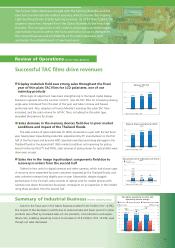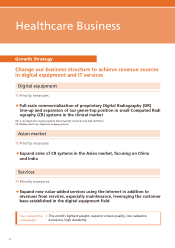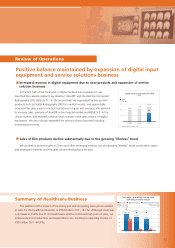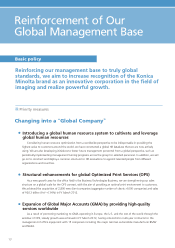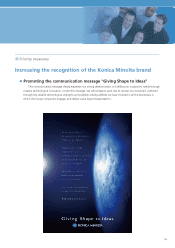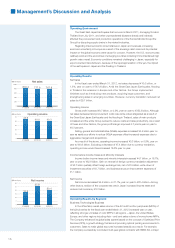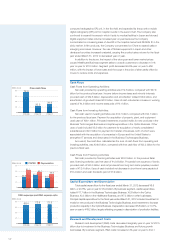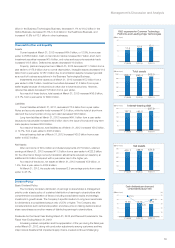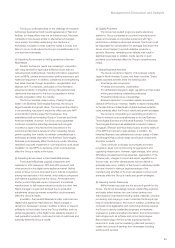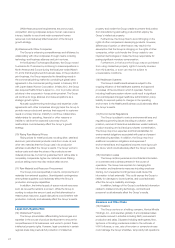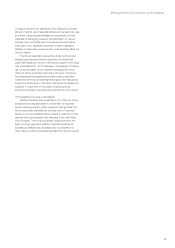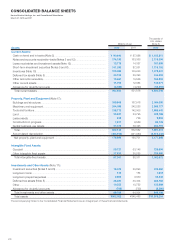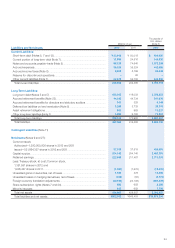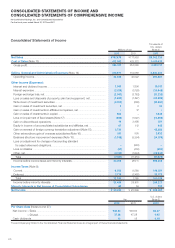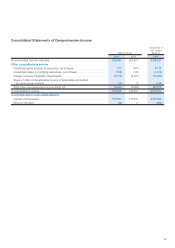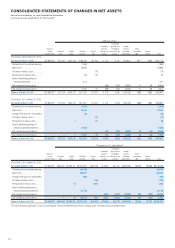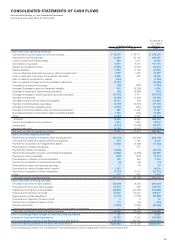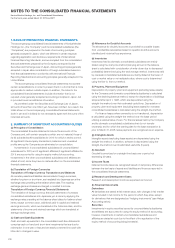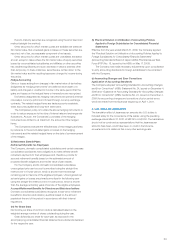Konica Minolta 2012 Annual Report Download - page 21
Download and view the complete annual report
Please find page 21 of the 2012 Konica Minolta annual report below. You can navigate through the pages in the report by either clicking on the pages listed below, or by using the keyword search tool below to find specific information within the annual report.The Group continually takes on the challenge of innovative
technology development and invests aggressively in R&D and
facilities, but these efforts may not be timely enough. Moreover,
competitors may develop similar or alternative technologies
more quickly. Accurately determining new directions in
technology innovation to meet customer needs is crucial, and
failure to do so could reduce the Group’s competitiveness in its
core and new businesses.
(4) Operating Environment in the Equipment and Service
Businesses
Solution and service needs are increasing in conjunction
with rising demand for high-value-added products that are
networked and multifunctional, including information equipment
such as MFPs, printers and production printing equipment, and
healthcare equipment. In addition, companies are strengthening
their sales channels through acquisitions, reorganization and
alliances with IT companies, particularly in the information
equipment industry. Competition among manufacturers and
distributors that respond to this trend is expected to further
intensify competition within the industry.
The Group operates under a policy of being the genre
leader in its Business Technologies Business, the Group’s
largest business and growth driver. The Group led the industry
in concentrating resources to expand its offi ce-use color MFP
and production printing equipment businesses, thus
establishing itself as the leading Group in European and North
American markets. However, the Group cannot guarantee
continued competitive advantage because technological
innovation is rapid in this fi eld and the importance of the
solutions and services business is further increasing. Slower
growth resulting from inability to maintain competitiveness in
technology and sales channels in the Business Technologies
Business could adversely affect the Group’s results. Moreover,
restrained corporate investment or cost reductions could cause
installation of new MFPs to decrease, which could adversely
affect the Group’s results in the future.
(5) Operating Environment in the Industrial Business
The Industrial Business supplies components and
materials for LCD televisions, DVD and HDD products, and
other products in the digital home appliance market. Selling
prices continue to trend downward due to intense competition
among manufacturers in this market, which affects component
and material suppliers such as the Group. At the same time,
shorter product lifecycles require component and material
manufacturers to sell mass-produced products in a short time.
Rapid changes in supply and demand due to production
adjustments caused by market competition could adversely
affect the Group’s results.
In addition, the Industrial Business’s major customers are
digital home appliance manufacturers. Rapid changes in
demand or decreases in prices in addition to failure to respond
suffi ciently to the industry trends the Group identifi es, such as
global reorganization of the digital home appliance industry or
next-generation products, could result in loss of customers and
adversely affect the Group’s results.
(6) Quality Problems
The Group has created a rigorous quality assurance
system for Group companies and contract manufacturers in
Japan and overseas, and provides customers with high-
performance, reliable products and services. The Group could
be responsible for compensation for damages that result if the
Group should happen to provide defective products or
services. Moreover, remedying such defects may result in
signifi cant expenses. In addition, media reports on such
problems could adversely affect the Group’s operations and
image.
(7) Global Business Activities
The Group conducts a majority of its business outside
Japan in North America, Europe, and Asian countries. These
global corporate activities entail the following risks:
• Exchange rate movements
• Political and economic uncertainties
• Unanticipated changes to legal, regulatory and tax codes
• Hiring and retaining outstanding employees
• Industrial infrastructure vulnerabilities
Business expansion in overseas markets is a primary
objective of the Group. However, inability to respond adequately
to the risks that are characteristic of global business activities
could adversely affect the Group’s results and growth strategies.
The Group is concentrating on expanding production in
China to enhance cost competitiveness in its core Business
Technologies Business and Industrial Business. The Business
Technologies Business has established production bases in
Dongguan, Shenzen and Wuxi that produce and ship nearly all
of the MFPs and printers it sells globally. In addition, the
Industrial Business has established production bases in Dalian
and Shanghai that produce image input/output components
and other products.
China continues to develop economically and make
progress in areas such as improving its legal system and
upgrading infrastructure. However, legal changes, labor policy
diffi culties, increased personnel expenses, appreciation of the
Chinese yuan, changes in import and export regulations and
the tax code, and other developments that are diffi cult to
anticipate may occur. Inability of the Group to effectively handle
the risks inherent in having a large percentage of the
manufacturing activities of its core businesses in China could
adversely affect the Group’s results and growth strategies.
(8) Securing Human Resources
Skilled human resources are the source of growth for the
Group. The Group increasingly requires outstanding engineers
and highly skilled workers who can further develop core
technologies in businesses including optics, materials, precision
processing, and imaging in order to maintain the Group’s high
level of competitiveness in the future. In addition, prevailing over
competitors as digitalization and networking advance requires
the Group to secure outstanding engineers and systems
engineers to quickly strengthen information and communication
technologies such as software and control technologies.
Beyond technology, the Group has a growing need for
personnel in areas such as marketing, sales and service to
create new sources of earnings from businesses including
solutions and services.
Management’s Discussion and Analysis
20


